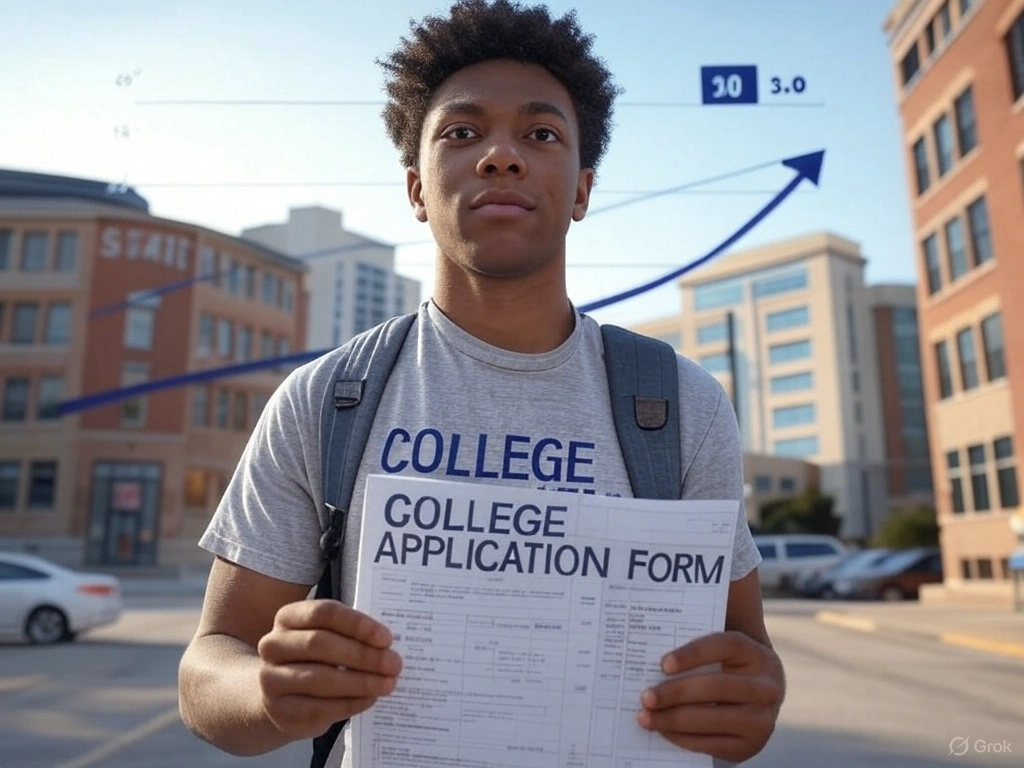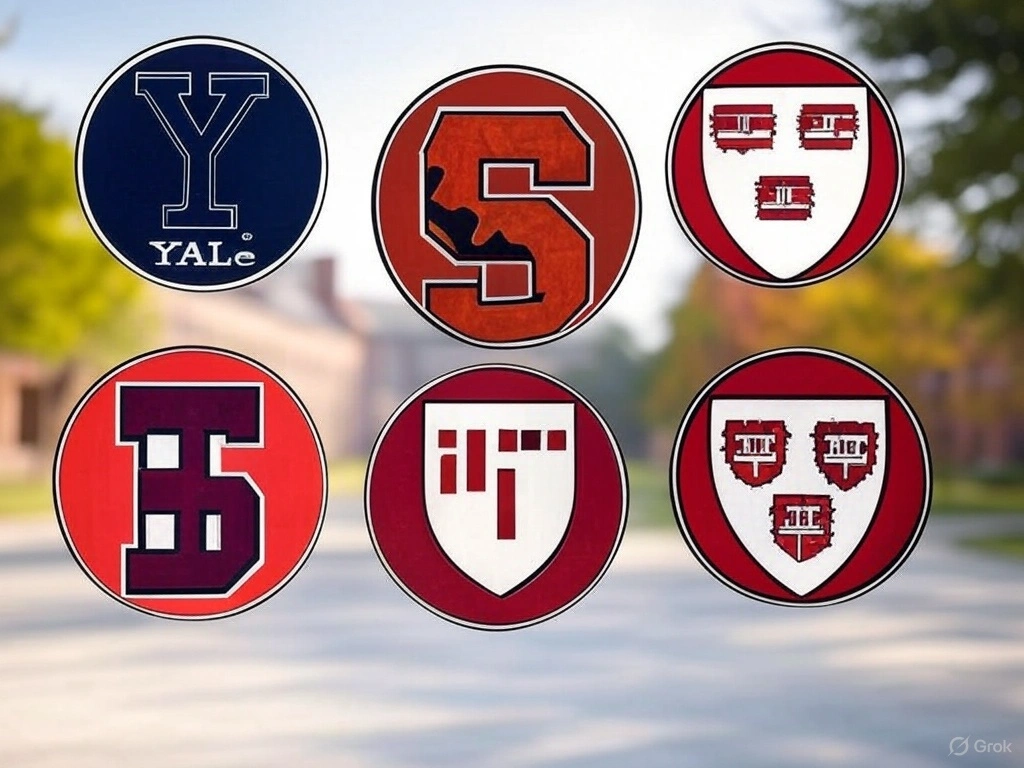How to Get Into College Even With Average Grades, You’re staring at your report card, and it’s not exactly screaming “valedictorian.” Maybe you’ve got a 3.0 GPA, a handful of B’s, a couple of C’s, or even a D that haunts you from sophomore year. You’re thinking, “Can I even get into college?” Here’s the good news—yes, you absolutely can. The U.S. college admissions system isn’t a monolith designed to punish average students. It’s a sprawling, diverse landscape with over 4,000 institutions, from elite Ivies to welcoming state schools, and they’re not all hunting for straight-A prodigies.
I’ve talked to students who’ve been in your shoes, scoured data from top sources like U.S. News & World Report and the National Association for College Admission Counseling (NACAC), and dug into what gets people through the admissions door. This isn’t some fluffy pep talk—it’s a battle-tested guide to getting into college with average grades. We’re talking actionable steps, real college examples, and strategies that have landed kids just like you at places like Arizona State University or the University of Central Florida. Ready to turn your “meh” transcript into a college acceptance letter? Let’s go.
The Big Picture: What Colleges Really Want
Before we get into the how-to, you need to understand the why. Colleges aren’t just filling seats with robots who ace calculus. They’re building communities. Sure, a 4.0 GPA looks nice, but admissions officers at schools like the University of Oregon (83% acceptance rate) or Texas State University (88%) are digging deeper. A 2023 NACAC survey found that 77% of colleges rate extracurriculars as “considerably important,” 52% say the same for personal essays, and only 60% put that much weight on grades in tough courses. Translation? Your story matters as much as your scores.
Then there’s the numbers game. Elite schools like Harvard (3.4% acceptance) or Stanford (3.7%) might scoff at a 3.0 GPA, but they’re outliers. The average acceptance rate across U.S. colleges is around 68%, per CollegeData. Places like Montana State University (73%) or the University of Southern Mississippi (96%) aren’t gatekeeping higher education—they’re inviting you in.
Step 1: Find Your Perfect College Match
Target the Right Schools
If your grades are average—say, a 2.5 to 3.2 GPA—your first move is finding colleges that won’t toss your application over a few B’s. Here’s a breakdown of options:
1. State Universities with High Acceptance Rates
- Arizona State University (ASU): Ranked #105 by U.S. News in 2025, ASU has an 88% acceptance rate and a reputation for innovation. They’ve got a “Barrett Honors College” if you want to level up, but their baseline admissions are super flexible.
- University of Houston: Sitting at #133 nationally, this Texas powerhouse accepts 66% of applicants. They love students who show hustle, like part-time workers or club leaders.
- University of Nevada, Reno: With an 88% acceptance rate, this school’s holistic review process means your grades aren’t the whole story.
2. Liberal Arts Colleges That Look Beyond GPA
- Western Washington University: Located in Bellingham, WA, this gem has an 83% acceptance rate and a chill vibe. They’re big on personal growth over perfection.
- Appalachian State University: Nestled in North Carolina, “App State” (83% acceptance) values community involvement and a solid essay.
3. Community Colleges as a Launchpad
- Santa Monica College (SMC): In sunny California, SMC has an open-door policy and sends tons of transfers to UCLA and UC Berkeley. Start here, ace your classes, and move up.
- Northern Virginia Community College (NOVA): Near D.C., NOVA’s got a pipeline to George Mason University (90% acceptance) and even the University of Virginia for high achievers.
Use Data to Your Advantage
Hop on College Navigator (from the U.S. Department of Education) or BigFuture by the College Board. Filter by GPA (e.g., 2.5-3.0), test scores, and location. You’ll find schools like Indiana University Bloomington (80% acceptance) or SUNY Plattsburgh (68%) that don’t demand perfection.
Step 2: Build an Application That Pops
Your grades might be average, but your application can be extraordinary. Here’s how to make it sing.
Write a Killer Essay
The personal essay is your secret weapon. At schools like San Diego State University (37% acceptance, but still doable with a strong app) or the University of Utah (89%), a good story can outweigh a so-so GPA. Admissions officers want to know you—not just your stats.
- Example: Sarah, a 2.7 GPA student, got into Boise State University (77%) with an essay about teaching herself guitar during a tough family move. It showed resilience and passion.
- Prompt Idea: “Describe a time you failed and what you learned.” Maybe you bombed a science project but turned it into a coding obsession.
- Resource: Check College Essay Guy for free templates.
Secure Strong Recommendation Letters
A teacher who’s seen you grind can tip the scales. Ask your English teacher who loved your poetry or the coach who watched you rally the team. James Madison University (78%) and Eastern Michigan University (83%) lean on these to spot potential.
Pro Tip: Give your recommender a “brag sheet”—list your achievements (e.g., “Led debate club to regionals”) so they’ve got ammo.
Flex Your Extracurriculars
- Colleges want doers, not just dreamers. Depth beats breadth every time:
- Worked 20 hours a week at Target? That’s responsibility—the University of Central Florida (41%) eats it up.
- Started a gaming club at school? Leadership—Portland State University (93%) loves it.
- Volunteered at a shelter? Heart—University of New Mexico (96%) takes note.
Step 3: Tackle Standardized Tests (If Needed)
Post-COVID, tons of schools—like the University of Illinois Chicago (79%)—went test-optional. But if your dream school still wants an SAT or ACT (check their website), a decent score can offset average grades. Here’s the playbook:
Know Your Target Scores
- University of Arizona: Middle 50% SAT is 1120-1350 (81% acceptance).
- Florida Atlantic University: 1020-1200 (78%).
- Kansas State University: 970-1210 (95%).
Prep Smart
- Free Tools: Khan Academy’s SAT prep is gold—personalized and at zero cost.
- Practice Tests: Grab a used ACT book from Goodwill or your library. Time yourself.
- Timeline: Study 2 hours a day for 6 weeks—students often jump 100-150 points, per The Princeton Review.
Step 4: Apply Like a Pro
Timing Matters
- Early Action: Non-binding, due around November 1. Try it at Elon University (74%) or the University of Tampa (54%).
- Early Decision: Binding, but a commitment signal. Muhlenberg College (66%) offers it.
Mix Your List
- Reach: University of Colorado Boulder (80%).
- Match: SUNY Buffalo State (85%).
- Safety: University of Southern Indiana (94%).
Step 5: Tell Your Unique Story
Maybe you’re the first in your family to chase college, or you built a PC from scratch. Schools like George Mason University (90%) and the University of Alaska Fairbanks (open admissions) crave students with grit and quirks. Highlight it in your essay, activities list, or even an interview if offered.

Success Stories to Inspire You
- Maggie, 2.9 GPA: Accepted to Boise State after writing about her community garden project—proof passion pays.
- Jake, 3.1 GPA: Hit Nevada, Reno with an Eagle Scout badge and a 1080 SAT.
- Priya, 2.6 GPA: Started at Miami Dade College, and transferred to Florida International University after two years.
Top Colleges for Average Students
- University of Utah: 89% acceptance, #115 nationally.
- Montana State University: 73%, outdoorsy vibe.
- Texas A&M University-Commerce: 86%, affordable and welcoming.
Conclusion
How to Get Into College Even With Average Grades, So, there you have it—average grades don’t mean game over. College is within reach if you play smart: pick the right schools, tell your story, and show what makes you tick. From Arizona State to your local community college, doors are open for students willing to step up. It’s not about perfection—it’s about potential. Take a deep breath, start today, and trust yourself. You’re not just a GPA; you’re a person with a future. Now go grab it—I’m rooting for you!
FAQ
Can you get into college with average grades?
Yes, absolutely! Many U.S. colleges, like Arizona State University (88% acceptance), prioritize essays, extracurriculars, and potential over perfect grades. With a solid application, average students get in every year—focus on your strengths and target the right schools.
Is a 4.7 GPA good for Harvard?
A 4.7 weighted GPA is strong, but Harvard’s bar is sky-high—think 4.0 unweighted, near-perfect SATs, and stellar extras. It’s competitive (3.4% acceptance), so while 4.7 helps, you’ll need standout essays and achievements to seal the deal.
Can an average student get into college?
How to Get Into College Even With Average Grades! Average students thrive at schools like the University of Houston (66% acceptance) or Montana State (73%). Highlight your story, hustle, and fit—colleges value more than grades. Thousands of options welcome students just like you.
Is a 2.0 GPA horrible?
It’s low, no sugarcoating—most four-year colleges want 2.5+. But it’s not fatal. Community colleges like Santa Monica College accept everyone, and you can transfer later. Boost it with strong extras and test scores to widen your options.
Is 2.5 an OK GPA?
How to Get Into College Even With Average Grades, It’s Workable! A 2.5 GPA fits schools like the University of Southern Mississippi (96% acceptance) or Eastern Michigan (83%). Pair it with a good essay and activities, and you’re in the game—plenty of colleges see your potential beyond numbers.











